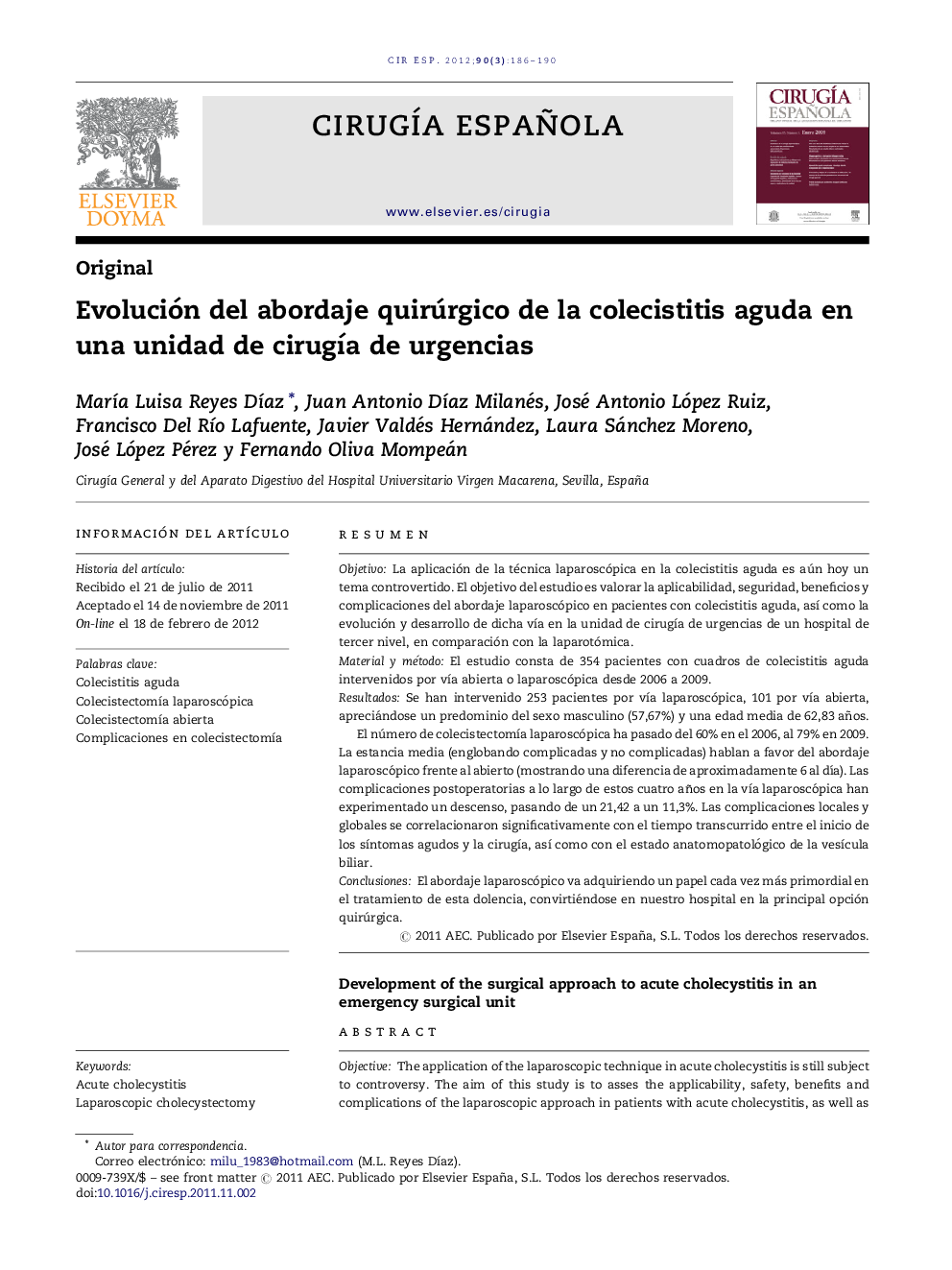| Article ID | Journal | Published Year | Pages | File Type |
|---|---|---|---|---|
| 4252961 | Cirugía Española | 2012 | 5 Pages |
ResumenObjetivoLa aplicación de la técnica laparoscópica en la colecistitis aguda es aún hoy un tema controvertido. El objetivo del estudio es valorar la aplicabilidad, seguridad, beneficios y complicaciones del abordaje laparoscópico en pacientes con colecistitis aguda, así como la evolución y desarrollo de dicha vía en la unidad de cirugía de urgencias de un hospital de tercer nivel, en comparación con la laparotómica.Material y métodoEl estudio consta de 354 pacientes con cuadros de colecistitis aguda intervenidos por vía abierta o laparoscópica desde 2006 a 2009.ResultadosSe han intervenido 253 pacientes por vía laparoscópica, 101 por vía abierta, apreciándose un predominio del sexo masculino (57,67%) y una edad media de 62,83 años.El número de colecistectomía laparoscópica ha pasado del 60% en el 2006, al 79% en 2009. La estancia media (englobando complicadas y no complicadas) hablan a favor del abordaje laparoscópico frente al abierto (mostrando una diferencia de aproximadamente 6 al día). Las complicaciones postoperatorias a lo largo de estos cuatro años en la vía laparoscópica han experimentado un descenso, pasando de un 21,42 a un 11,3%. Las complicaciones locales y globales se correlacionaron significativamente con el tiempo transcurrido entre el inicio de los síntomas agudos y la cirugía, así como con el estado anatomopatológico de la vesícula biliar.ConclusionesEl abordaje laparoscópico va adquiriendo un papel cada vez más primordial en el tratamiento de esta dolencia, convirtiéndose en nuestro hospital en la principal opción quirúrgica.
ObjectiveThe application of the laparoscopic technique in acute cholecystitis is still subject to controversy. The aim of this study is to asses the applicability, safety, benefits and complications of the laparoscopic approach in patients with acute cholecystitis, as well as the development of this technique in the emergency surgery department of a tertiary hospital, compared to laparotomy.Material and methodThe study consisted of 354 patients with acute cholecystitis syndromes operated either by open or laparoscopic surgery, during the years 2006 to 2009.ResultsThe laparoscopic method was used in 253 patients, and 101 by the open route, with the slight majority being male (57.67%) and with a mean age of 62.83 years.The number of laparoscopic cholecystectomies increased from 60% in 2006, to 79% in 2009. The mean hospital stay (including those with and without complications) was shorter using the laparoscopic approach, compared to open surgery (showing a difference of approximately 6 days). The postoperative complications in laparoscopy during the four years studied decreased from 21.42 to 11.3%. The local and general complications were significantly associated with time since the start of the acute symptoms and the surgery, as well as the histopathological state of the gall bladder.ConclusionsThe laparoscopic approach continues to play an increasing role in the treatment of this disease, becoming the main surgical option in our hospital.
